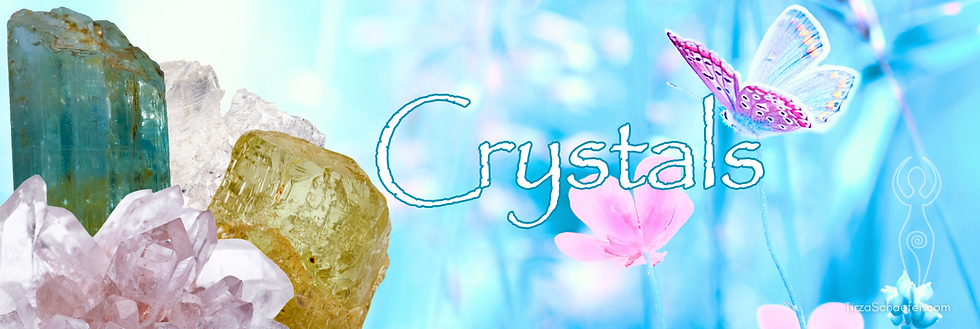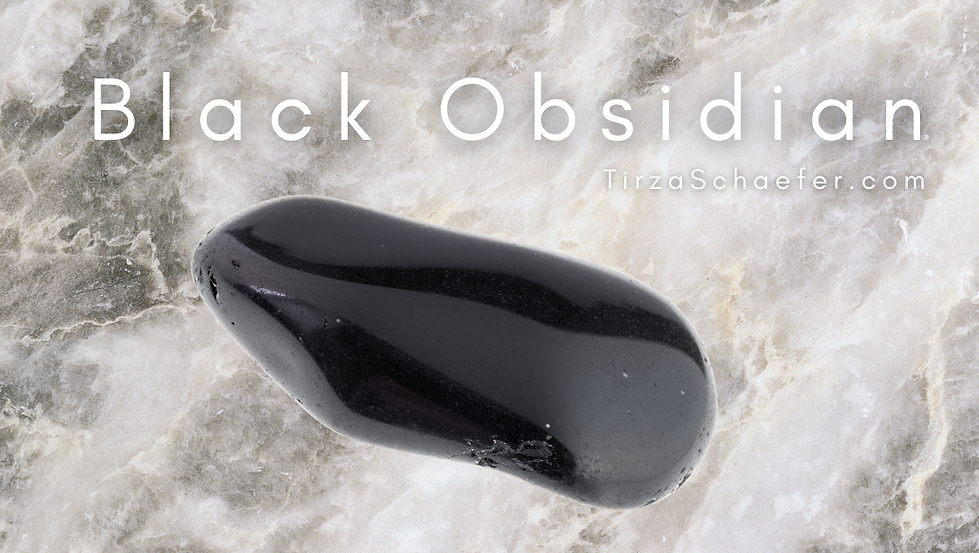
Tirza Schaefer: Romance Author & Goddess Facilitator

Black Obsidian
Gemstones and minerals have been used since times immemorial for ritual purposes, to mark places and for healing. The work with crystals and its positive effects is well documented and comprises a valuable additional tool alongside traditional and alternative forms of treatment. For a list of stones and further information, please visit the Crystals page.
Alternate Names
Wizard Stone
Stone of Truth
Warrior of Truth
Mirror of the Incas
Iceland Agate
Volcanic Glass
Mirror Stone
Scrying Glass
Locations
Brazil, China, India, Mexico, Argentina, Armenia, Azerbaijan, Australia, Canada, Chile, Georgia, Ecuador, El Salvador, Greece, Guatemala, Hungary, Iceland, Indonesia, Italy, Japan, Kenya, Mexico, New Zealand, Papua New Guinea, Peru, Russia, Scotland, the Canary Islands, Turkey, United States
Composition
Obsidian is volcanic glass formed from lava when it extrudes from volcanoes, cools down rapidly and has minimal crystal growth. It consists of Silicon Dioxide with impurities and is of the mineraloids class of crystals. It is opaque in appearance and black in colour. The stone is hard, brittle, and amorphous and, therefore, fractures with sharp edges.
General Information & Legends
The word Obsidian comes from the Latin obsidianus which means "the stone of Obsidius," so named after the prominent Roman explorer who discovered it in Ethiopia. The first known archaeological evidence of usage was in Kenya in the Acheulian age, around 700,000 years ago. By the late Neolithic, manufacture of obsidian bladelets at Lipari, off the coast of Sicily, had reached a high level of sophistication. They were traded as far as Sicily, the southern Po river valley, and Croatia.
Obsidian bladelets were used in ritual circumcisions and cutting of umbilical cords in Southern Italy. Anatolian sources of obsidian are known to have been the material used in the Levant and modern-day Iraqi Kurdistan from a time beginning sometime about 12,500 BCE. In ancient times, Black Obsidian was used as an amulet for those travelling by sea or river and to form weapons and tools but was also polished into mirrors and slabs to use for scrying. In fact, the Aztecs carved the Sky God Tezcatlipoca, whose name means “Smoking Mirror” out of Obsidian. In the Middle Ages, it was used to drive out demons and evil spirits.
During the late fifth millennium BCE, Obsidian artifacts were common at Tell Brak, one of the earliest Mesopotamian urban centers. In Stone Age cultures, Obsidian was valued because it could be fractured to produce sharp blades or arrowheads, like flint. It was also polished to create early mirrors. Obsidian artifacts first appeared in the European continent in Central Europe some 300,000 to 50,000 years ago in the Middle Paleolithic. Artifacts made of obsidian can be found in many Neolithic cultures across Europe.
John Dee, an English mathematician, astronomer, teacher, astrologer, occultist, and alchemist had a mirror made of Obsidian which was brought from Mexico to Europe between 1527 and 1530 after Hernando Cortés's conquest of the region. In Turkey, Obsidian scalpels older than 2100 BCE have been found in a Bronze Age settlement and even in Mesopotamia and Egypt, Obsidian was already in use long before this. In the eastern Mediterranean area the material was used to make tools, mirrors and decorative objects.
Pre-Columbian Mesoamericans' use of Obsidian was extensive and sophisticated, including carved and worked obsidian for tools and decorative objects. Mesoamericans also made a type of sword with obsidian blades mounted in a wooden body, called macuahuitl. Some Aztec priests used Obsidian mirrors to conjure visions and make prophecies.

Deities & Angels
Ereshkigal (Sumerian)
Iana (Roman)
Tezcatlipoca (Aztec)
Archangel Sabrael (impossible healing and miracles)
Chakras
Root
Healing
Physical: grounding, protection from EMFs and geopathic stress, arthritis, circulatory problems, detoxifying, digestion, joint pain, knee health, muscle tension, pain relief, physical protection, speed up bruising, sprain, strains and wound healing, supports combating addictions like alcohol, cigarettes, drugs or comfort eating/overeating.
Emotional/Mental: works quickly to release negative emotions attached to unresolved issues, (if this is too intense, swap to Apache Tears or Mahogany Obsidian, which will work in a gentler way), emotional blockages, destructive thoughts, reducing stress and/or tension, self-reflection, helpful to use following a traumatic event, especially sexual assault or domestic violence, helps clear the blockages that cause mental health issues and depression.
Spiritual: protection against energy vampires, negative energies and spiritual entities, shamanic tool for removing blockages and detritus from the past, past life regression and memories, heals ancestral lines, reverses previous misuse of power, helps to look at unresolved issues, psychic protection especially from psychic attacks and bullying.
Birthstones & Anniversaries
Meditation
Black Obsidian used in meditation helps to expand your consciousness and get to a place of truth within yourself. It can allow you to access your shadow self in order to recognise your flaws, weaknesses, fears, etc.
Affirmation
I am grounded and protected whilst releasing all negative energy within and around me.
Warning
Black Obsidian can easily crack or chip especially if dropped.
Cleanse your crystals regularly.